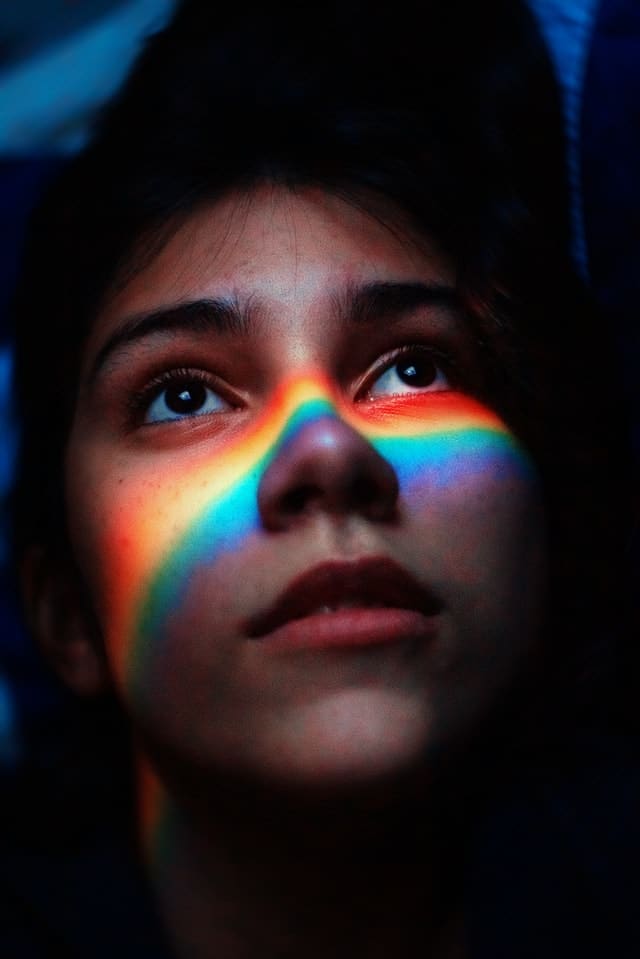The pandemic has caused a great jolt to the world and with these economic, social and mental convulsions came revelations, especially the one that underscored how important inclusion is for humanity. Take our local ‘faux pas’ for example; Singapore thought that we were flattening the curve victoriously until we realised that we neglected an integral component in our community – the migrant workers.
The new normal of working from home has also highlighted the copious amount of responsibilities a working mom or caregivers have. Prior to this new working regime, the notion of juggling multiple roles was well taken for granted. It was confinement and physically working at home while handling the needs of demanding children that caused the pressure metre to shoot up and many buckled. Fortunately, many companies have started to become empathetic and initiatives have been launched around wellness and childcare for families.
Lower-income families have also been a subject of discussion when problems arose with them not being able to connect digitally when bandwidth became a staple in our routine. Having a computer for each child was a luxurious entitlement, and every school kid needed to quickly adapt to home-based learning on their devices. Certain schools have thankfully hence responded to this crisis by allowing children to purchase a laptop using their Edusave, but this initiative still has a long way to go in order to effectively ameliorate financial issues faced by the lower-income families.
What defines inclusion?
“We should acknowledge differences, we should greet differences, until differences make no difference.”
Dr Adela A Allen
Inclusion, in broad terms, is about belonging to and participating in a diverse society. Differences are respected and diversity is accepted. Opportunities should be made equal across race, religion, social class, sexuality, differently-abled persons and people with mental disabilities.
We have mentioned the perils of lacking inclusivity on a macrocosmic level, but the insinuating effects of this lack is a far more personal and insidious one. Because of ostracism and discrimination, the well-being of one’s mental health can be greatly compromised.
One of the effects of not being included has been coined as minority stress. Described as high levels of stress, this is faced by members of stigmatised minority groups. The causes range from poor social support, low socioeconomic status, prejudice and discrimination. Groups and individuals who undergo such stress are at higher risk of substance abuse, suicide attempts, depression and anxiety across the lifespan.
This month, June, is pride month and countries around the world celebrate the LGBTQ+ community. We recognise them as part of our community and proclaim our friendship and acceptance with them. While we commemorate their existence in jubilance, we also recognise the dangers that they face in a world that is still making baby steps towards inclusivity.

Studies have shown that minority stress is prevalent amongst the LGBTQ+ community. They experience stigma, prejudice and reside in hostile environments that result in many mental health struggles. The bisexual and transgender communities have the highest rates of mental health concerns within the LGBTQ+ population. Naturally, the younger members of the LGBTQ+ struggle the most with mental health concerns of all the age groups. While many of them emerge strongly from adversity, their high risk of experiencing shame, fear, discrimination and traumatic events may result in indelible emotional scars.
Many experience oppression and resentment from the heart of the home, in their family, especially amongst traditional and religious family units. In school, peers may hurl hurtful slurs at someone who does not conform to the gender binary normative. When it comes to employment, it is common for people to be rejected or denied because of their sexual orientation or gender identity. Transgenders have shared that they avoid going to doctors due to fear of discrimination. These are layers of intolerance that society meets in the LGBTQ+ community.
Statistics have been published in the US:
LGBTQ+ teens are six times more likely to experience symptoms of depression than non-LGBTQ+ identifying teens.
LGBTQ+ youth are more than twice as likely to feel suicidal and over four times as likely to attempt suicide compared to heterosexual youth.
Forty-eight percent of transgender adults report that they have considered suicide in the last year, compared to 4 percent of the overall US population.

Studies on the LGBTQ+ community in Singapore have not been extensive enough for the tabulation of statistics, but are attitudes different here? Although violence is less substantial on our local grounds, the traditional and conservative mindset still prevails in Singapore. Deviation of the typical familial unit is largely frowned upon, particularly amongst religious groups.
The Pink Dot movement, in its 13th year, attests to how an LGBTQ+ community is very much robust and expanding in numbers. Recent cases relating to LGBTQ+ have also hit the headlines, validating their existence and importance in society.
Many have read about the transgender teen whose treatment was impeded by the Ministry of Education. This incident exposed a debacle in the educational system, showing how it negates gender dysphoria even though it is treacherous to one’s mental health.
A poll was done by transgender shelter T Project and social enterprise B-Change, which found that 78 per cent of respondents felt depressed. Sadly, a transgender women Jolene Tan, professed that mental health issues are “part and parcel” of being transgender. A survey of 41 transgender women in Singapore revealed that nearly half have thought of suicide while 15 per cent have actually acted on those thoughts and tried to kill themselves.
An article on Today in 2019 purports that more LGBTQ+ have been seeking mental health support. A 48-year-old gay men relayed his story on how he was severely affected by another teenager who allegedly hung himself after experiencing homophobic bullying on social media. Confessing that he has experienced intense periods of rage and bouts of depression due to work and relationship issues, he has had suicidal thoughts over the last 30 years.
Dr Keng Shian-Ling, an assistant professor at the department of psychology at the National University of Singapore commented that depression and suicidal tendencies are conditions that can be debilitating and yet they are treatable. There needs to be more public dialogue and education involving both the public and professional community on LGBTQ+ issues.
Fortunately, there are help and support groups available here. Some of them include Oogachaga, AWARE, Project T and IMH Gender Care Clinic. For a list of resources, click here. Some therapists that practice at A Space Between also specialise in handling LGBTQ+ issues and our co-practice space welcomes more practitioners to reach out to marginalised communities.

Many companies have gradually started to embrace diversity and inclusivity in their workspaces due to the benefits that include higher revenue, more innovation and better decision making. Importantly, it must be recognised that diversity is the first step, and inclusivity is the key to actually maintaining diversity. Inclusivity is making people from all backgrounds feel included, and simple ways to do this is ensuring that every voice is welcome, heard, respected, fostering a multigenerational, multilingual work team and strengthening anti-discriminatory policies.
At an individual level, we can start to become more empathetic towards others, especially those who are different. Calling out bigotry and hate speech towards marginalised groups like the LGBTQ+ is also a form of support, while we should always try to speak up for the minority instead of leaving them to fend for themselves.
While we continue to improve values of diversity and inclusion here in Singapore, A Space Between, a purveyor of mental wellness, wishes to remind that everyone is welcome here. We offer a workspace for private therapists who are looking for a professional and safe meeting venue for consultations. You can enjoy therapy room rental at affordable rates and then can meet your clients at ease. Whether you are here to seek help or help others, we will extend our handshake to you, no matter what your background is. Happy pride month!
If you wish to join us, please contact [email protected].
Known as Nate, I am someone who cannot quit wielding the pen or punching the QWERTY, no matter where life brings me. Writing has always been the most effective conduit for channeling my wanted or unwanted opinions since I was an undergraduate at NUS. Naturally, I used this skill as a means of sustenance after working as a writer and editor for many years until I decided to start a business in music. That did not put a halt to my marriage with the vernacular.
In October 2016, I graduated with my Masters in Visual and Media Anthropology, which is the study of cultures through films and photography, at Freie Universität Berlin. This transitory period of residing in two cities has pushed the boundaries of my creativity and my battles with word count have not ceased.
Now a new mode of writing, the academic one, has been added to my existing smorgasbord of corporate and lifestyle collaterals, articles, advertisements, annual reports and books. At the moment, my learning curve is an uphill journey as I attempt to grasp the camera for stills and motion clips, while I juggle that with developing my love affair with my other mode of expression – electronic music.


